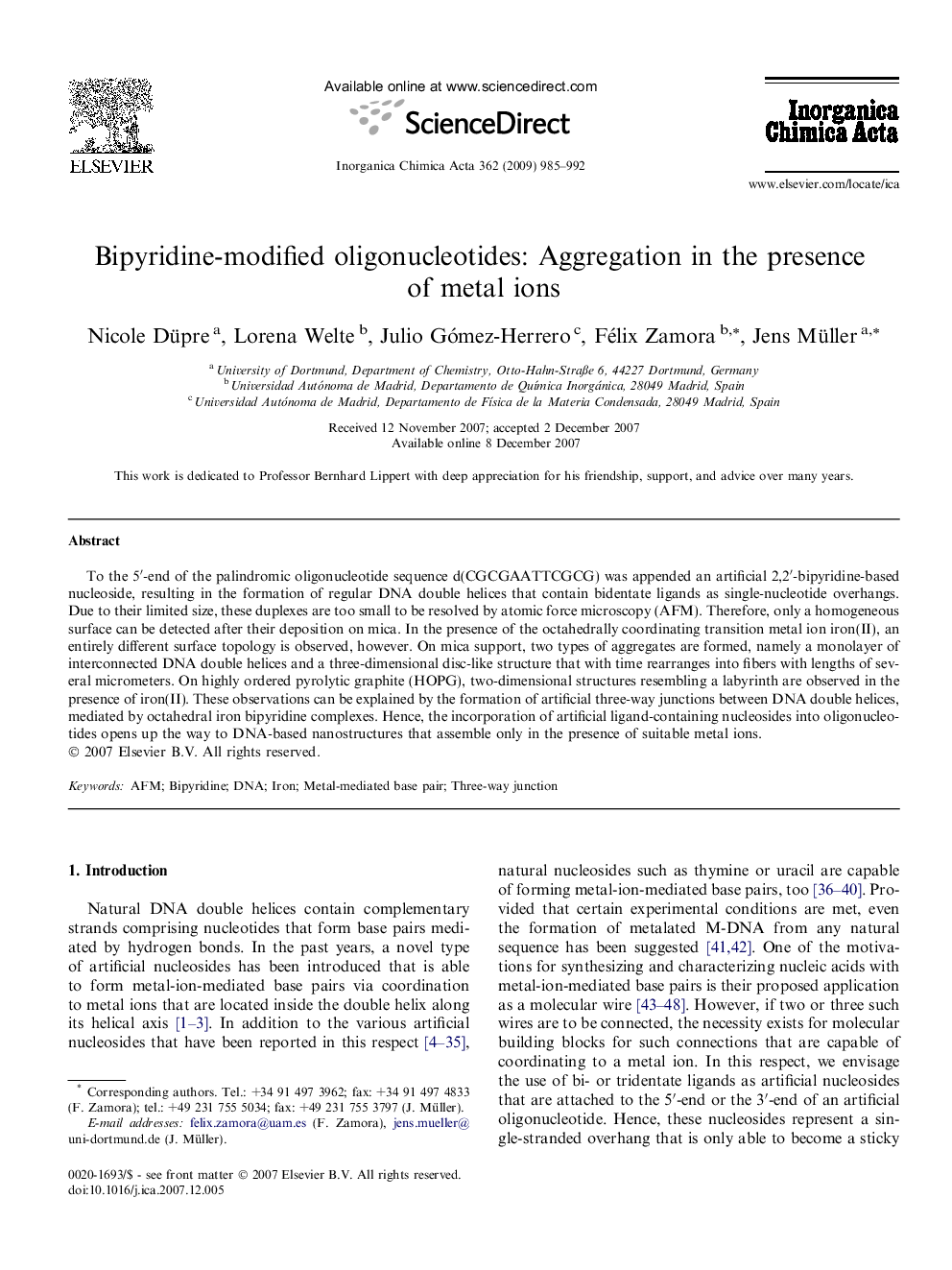| Article ID | Journal | Published Year | Pages | File Type |
|---|---|---|---|---|
| 1308852 | Inorganica Chimica Acta | 2009 | 8 Pages |
To the 5′-end of the palindromic oligonucleotide sequence d(CGCGAATTCGCG) was appended an artificial 2,2′-bipyridine-based nucleoside, resulting in the formation of regular DNA double helices that contain bidentate ligands as single-nucleotide overhangs. Due to their limited size, these duplexes are too small to be resolved by atomic force microscopy (AFM). Therefore, only a homogeneous surface can be detected after their deposition on mica. In the presence of the octahedrally coordinating transition metal ion iron(II), an entirely different surface topology is observed, however. On mica support, two types of aggregates are formed, namely a monolayer of interconnected DNA double helices and a three-dimensional disc-like structure that with time rearranges into fibers with lengths of several micrometers. On highly ordered pyrolytic graphite (HOPG), two-dimensional structures resembling a labyrinth are observed in the presence of iron(II). These observations can be explained by the formation of artificial three-way junctions between DNA double helices, mediated by octahedral iron bipyridine complexes. Hence, the incorporation of artificial ligand-containing nucleosides into oligonucleotides opens up the way to DNA-based nanostructures that assemble only in the presence of suitable metal ions.
Graphical abstractA 2,2′-bipyridine-based nucleoside appended terminally to a short palindromic DNA sequence enables the formation of metal-ion-mediated junctions between neighboring double helices. Atomic force microscopy on mica and highly ordered pyrolytic graphite supports was used to visualize the concomitant aggregation of the oligonucleotide duplexes in the presence of iron(II).Figure optionsDownload full-size imageDownload as PowerPoint slide
